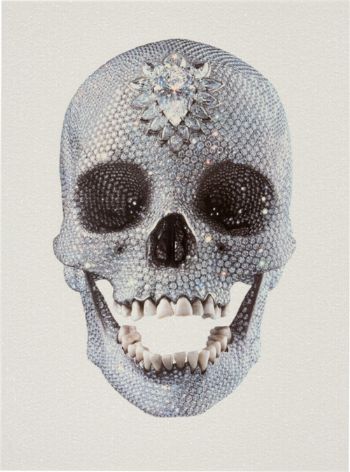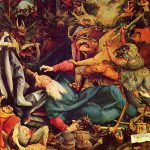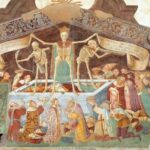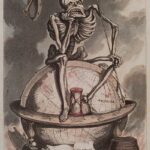Another notable genre of art associated with memento mori is the Vanitas ou vanité (French) (Latin for ‘vanity’), which focuses on still-life works, containing various symbolic objects that are meant to remind the viewer of their mortality, and emphasize the worthlessness of worldly pleasures. Such works of art often contain traditional memento mori symbols, such as the skull, together with symbols that are intended to represent worldly possessions, such as musical instruments.
The name of this genre comes from the following biblical quote:
Vanity of vanities, said Ecclesiastes: vanity of vanities, and all is vanity.[vanitas vanitatum dixit Ecclesiastes vanitas vanitatum omnia vanitas]

History of vanitas
Vanitas themes were common in medieval funerary art, with most surviving examples in sculpture. By the 15th century, these could be extremely morbid and explicit, reflecting an increased obsession with death and decay also seen in the Ars moriendi, the Danse Macabre, and the overlapping motif of the Memento mori.
From the Renaissance such motifs gradually became more indirect and, as the still-life genre became popular, found a home there. Paintings executed in the vanitas style were meant to remind viewers of the transience of life, the futility of pleasure, and the certainty of death. They also provided a moral justification for painting attractive objects
Beginning in the 16th century and continuing into the 17th century, a group of painters centered around the Dutch city of Leiden began to produce distinctive vanitas paintings. The city was Protestant, and the artificial pleasures of this life were heavily emphasized by the theologians who studied at the University of Leiden. The birthplace of Rembrandt, the city was also a center of the Dutch Renaissance. The memento mori was embraced by the painters of the Dutch Golden Age such as Rembrandt van Rijn, Johannes Vermeer, and Frans Hals and the vanitas became a type of still-life Dutch master painting.
The Vanitas paintings were heavily influenced by Protestant ethics, and reminded individuals that despite the appeal of worldly things, they remained ephemeral and inadequate in relation to God.
Vanitas paintings can be considered as a variation of the traditional still life form. Typical still-life paintings consisted of inanimate and ordinary objects, such as flowers, food, and vases, with the attention of the artwork being placed on these objects alone. The style of Vanitas art presented a moral justification for painting attractive objects in macabre settings.
Realism is also noticeable in Vanitas paintings as they are extraordinarily intricate and specific. A closer examination of the artworks revealed the heightened skill of artists, as they highlighted objects of the viewer’s life in an attempt to make the painting as relevant and applicable as possible.

In addition to being popular throughout its time, Vanitas has continued to influence some of the artworks that are currently seen in post-modern artistic society. Well-known artists who have experimented with the Vanitas style include Andy Warhol and Damien Hirst, who made use of skulls within their artworks. Damien Hirst‘s For the Love of God is as a sort of “counter-vanitas,” or a triumph over death, the work is a platinum cast of an 18th-century human skull encrusted with over 8,000 diamonds. The teeth are real human teeth.
Jana Sterbak, (Vanitas: Flesh Dress for an Albino Anorectic, artwork, 1987), Alexander de Cadenet, (Skull Portraits, various subjects, 1996 – present), Philippe Pasqua, (series of skulls, sculpture, 1990s – present) are other examples of the permanence of vanitas.
Symbols
At first glance, Vanitas paintings are incredibly striking, as their compositions are very chaotic and disorganized. The canvas is typically cramped with objects that seem random at first, but upon closer inspection, the type and proximity of the objects hold a lot of symbolism and exist as a stylistic choice.
The most important symbol that is ubiquitous within the numerous Vanitas paintings is the awareness of man’s mortality. No matter what other objects were included, the reference to mortality is always made clear. Most often, this was depicted through the inclusion of a skull.
But other objects indicate the passing of time and the brevity of life.
- wilting flowers
- burning candles,
- rotten fruit
- bubbles
- smoke
- hourglasses, open pocket watches, and clocks
- musical instruments
- butterflies
Motifs
Numerous symbols are represented within Vanitas paintings, with the same type of motifs used for each category. The motifs that were used to portray wealth included gold, purses, and jewelry, while those used to describe knowledge incorporated books, maps, and pens. Pleasure took on the form of food, wine cups, and fabrics; and the symbols of death and decay were typically represented by skulls, candles, smoke, flowers, watches, and hourglasses.








